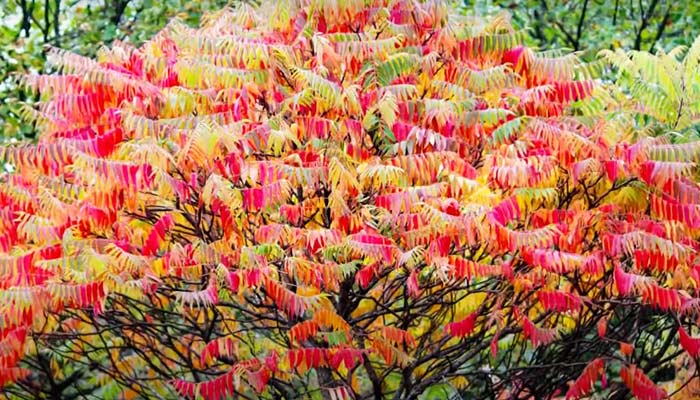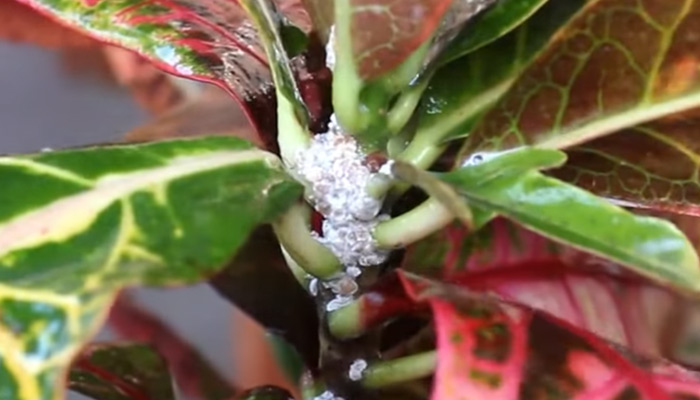Are you one of the sufferers who have gone through the problem of burning bush leaves turning yellow? I found it in many gardens too and observed some reasons.
This problem is caused due to water stress, shade condition, low temperature, root bound, over-fertilization, use of glyphosate, transplant shock, insects and diseases. When I found these causes, I tried to find out effective solutions and also found some which worked great in my plant.
I have listed those solutions here and if you want you can also pick them to sort out your problem. I have enlisted them in a short table for a quick overview.
| Problems | Solutions |
| Water stress | Water your plant regularly when it needs |
| Shade condition | Keep the plant in full sun |
| Low temperature | Maintain the favorable temperature of 53.6-68°F |
| Root bound | Continue repotting or root pruning |
| Over-fertilization | Fertilize your plant once a year in the spring |
| Use of glyphosate | Don’t use glyphosate in your plant |
| Transplant shock | Make the necessary elements available for the plant |
| Insects | Use pesticides or organic solutions |
| Diseases | Remove the affected parts and use bactericides |
Burning Bush Leaves Turning Yellow – 9 Reasons With Effective Solutions

1. Water Stress
At the top of the list, I want to mention the water stress that is created in the plant due to underwatering. It is one of the most crucial problems if you keep your plant without water. The minerals and nutrients cannot pass through the vascular bundles.
On the other hand, the photosynthesis system is devastated due to excessive drought. The leaves cannot produce food and ultimately the stress is expressed through the yellow color of the leaves.
Control Measures
Water your plant enough when almost two inches of the soil is dried. You can use a moisture meter to understand the moisture level in the soil which may direct you to the watering process. But remind it not to overwater your plant.
2. Shade Condition
Next, let’s know about the sunlight necessity of the plant. If the plant is kept under shade over a long period, it starts to be pale. As it cannot complete its food processing activities in shade, the plant parts cannot get enough food for its establishment.
Meanwhile, it becomes weak in the absence of enough food. Besides, the shady condition is favorable for bacterial and other microorganisms’ growth. They can easily penetrate weak plant parts and cause disease. Thus, the leaves become yellow.
Control Measures
Burning bush plants thrive in the sun. Hence, plant them in such a place where they can get enough sunlight. Besides, avoid planting it by the side of any large tree which can create shade for it.
Morning light is the best for plant development. The planting direction should be such that it can get the morning light and can be saved from the scorching afternoon light.
3. Low Temperature
Temperature is one of the most important abiotic factors for plants. Burning bush leaves may turn yellow if you keep them in a frost area or very low temperature.
The excessive temperature lowers the running mechanism inside the plant by inhibiting the actions of various enzymes. Besides, too low a temperature creates a physiological drought of the plant by creating a barrier for the water uptake issue. The water in the root zone gets frozen and such a situation occurs.
Control Measures
Burning bush plants love to grow at their optimum temperature which is about 53.6-68°F. Try to maintain this temperature around it. Don’t keep your plant outside while it is frosted.
Water your plant regularly so that the water cannot turn into ice bars inhibiting the plant from uptake water. If the situation reaches the extreme limit, you can use a little amount of salt to relieve the plant.
4. Root-Bound
After that, I will talk about the root-bound problem. The root-bound problem takes a severe form if you don’t take initiative immediately as it collapses the activities of the plant.
When a plant faces such a problem, the root system cannot supply enough water and minerals to the plant. As a result, the plant cannot produce enough food and the overall activities are hampered.
Control Measures
To control root-bound problems, you can go for repotting. For this purpose, just uproot the plant from the existing pot and then plant it in another larger pot.
Else, if you want to keep the plant in the same pot, you can prune the roots so that they can become perfectly adjusted with the existing pot. Thus, you can be free from root-bound problems.
5. Over-fertilization
Following that, why not say something about the over-fertilization issue? Fertilization is important for plant growth and development. But this fertilization may become dangerous for the overall growth of the plant if you apply it at an extreme range.
Too many fertilizers burn the roots and leaves of the plant. As a result, the root system is damaged and the whole plant gets stressed which you can see through the yellowing of the leaves.
Control Measures
Fertilize your plant once a year in the spring. You can use organic fertilizers like mustard oil cake. It is also helpful for the plant. Using dilute fertilizer may help you more in this case.
6. Use of glyphosate
Glyphosate is generally used as a weedicide. But it has some powerful chemical substances that a burning bush plant cannot tolerate. As weeds are problematic for the plant, new gardeners may use this chemical to destroy the weeds.
But glyphosate affects the plant root too much and the root gets burnt. As a result, the plant becomes devastated and dies after a certain time.
Control Measures
Don’t use glyphosate to remove the weeds around the plant. It has no antidote which you can use to make your plant survive. Remove the weeds by hand weeding to avoid such a situation.
7. Transplant Shock
Transplanting is mainly the transfer of the plant to another pot or a large field from a small pot when the seedlings are large enough. But still, some seedlings cannot tolerate the outer environment because of the fluctuations and effects of the natural elements.
If you put your plant directly at an extreme condition suddenly after transplanting, the plant won’t be able to adjust there. Consequently, it will start to show yellowing and at last will die.
Control Measures
After transplanting, you should allow your plant to take some time to adapt to the broad environment. In the first stage, keep your plant in the sunlight for a few hours and then after some days keep them in the full sun.
Besides, water them properly and regularly and be sure of the temperature. You should maintain the optimum temperature at that period to save the plant leaves from yellowing.
8. Insects

Some common insects are found in this plant like-
- Mealybugs
- Thrips
- Scale
- Mites
They suck the cell saps or chew the soft axils or tips of the leaves or the buds. They attack the leaf veins and take nutrients from there. Thus, the produced foods are consumed by them and the plant cannot deliver it to the other parts for better establishment.
Control Measures
To remove the insects of the plant, you can pick them by hand and remove them if the population is at an initial stage as they remain in small proportion at that time.
If they are large in population and it is impossible to pick them, you can use organic pesticides or industrial pesticides (Our pick). If you are in a hurry, you can use the chemicals for the fast removal of pests.
Otherwise, you can use organic pesticides like neem oil, baking soda solution, liquid soap solution etc. Among them, I am mentioning two of the procedures.
- Neem oil recipe
Use 2 teaspoons of concentrated neem oil, 1 teaspoon of liquid soap, ½ teaspoon of aloe vera powder and a few drops of essential oil in 1 gallon of water. Mix them well and spray them on the plant.
- Baking soda solution
Mix 4 teaspoons of baking soda in 1 gallon of water and spray on the plant.
Else, you can also pheromone trap or light trap to attract the plant and kill them if any moveable insect-like hoppers harm your plant.
9. Diseases
A burning bush plant is not properly susceptible to most diseases. But a few diseases may occur in them due to insect attacks which are-
- Powdery mildew
- Twig blight
Control Measures
Remove the affected parts of the plant leaves and don’t overwater your plant. A soggy condition is favorable for the bacterial effect. Check the moisture level of the soil regularly.
Else, you can also use bactericides or fungicides in your plant. Or, you may use organic solutions as I stated before.
Caring Guides For Burning Bush Plant
| Climate | A warm and humid climate |
| Sunlight | Full sun to partial shade |
| Temperature | 53.6-68°F |
| Soil | Sandy loam and well-drained soil with a pH of 6.0-6.5 |
| Humidity | More than 60% |
| Watering | Water the plant when needed |
Final Thoughts
So, I have to end my overall experiences about the burning bush leaves turning yellow and the solutions that I found after trials. Though this plant doesn’t need a lot of care, it may also become wilted in the case of regular avoidance.
The problems that I stated here are quite common for most gardeners who have a burning bush in their garden. If you are also one of them, feel free to try my solution if you want. I think it will be helpful for you.
- How to Make a Plumeria Flower Bloom? Pro Tips - July 11, 2024
- Plumeria Not Growing Leaves? Revitalize Your Plant! - July 11, 2024
- How to Grow Plumeria? Thriving Blooms Secrets - July 11, 2024

